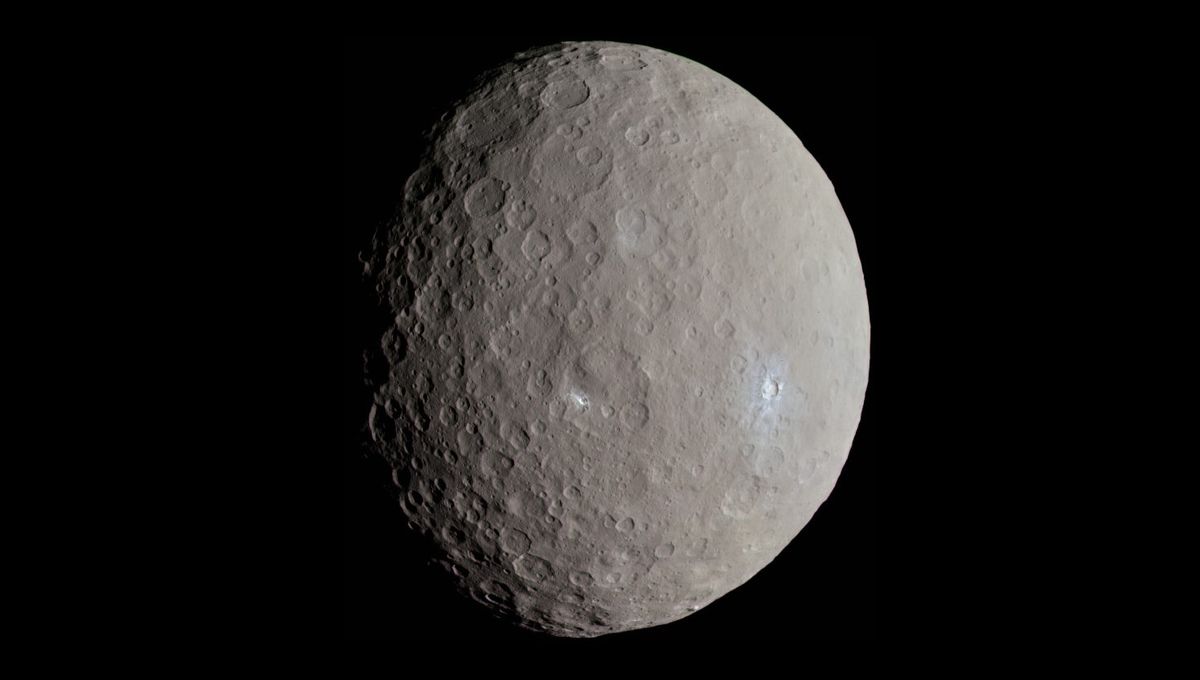
Ceres, a dwarf planet and queen of the Asteroid Belt, continues to be a fascinating world. When it was visited by NASA’s Dawn, signs of geological activity – including ice volcanoes – were abundant. The spacecraft also reported the presence of several organic-rich regions. The assumption was that comets and asteroids brought those to the Cererian surface. New work challenges that assumption.
Ceres is a big sphere of ice and rock. It is unlikely to have an ocean underneath but it is possible that it possesses a briny interior that flows, and that occasionally erupts into cryovolcanoes like Ahuna Mons. In the inner Solar System, it is second only to Earth for its amount of water. New analysis of Dawn’s data has revealed more regions rich in organic materials, which disfavor the idea that these materials have an exogenous source – they were not brought here by collision.
There is another piece of evidence in support of endogenous production. Researchers conducted lab experiments to see how long it would take these deposits to degrade. They estimate that Ceres had between twice and as many as 30 times more organic material than detected today; that is much more than could be brought by an asteroid. Internal production is more likely according to these results, with potentially big consequences.
“The significance of this discovery lies in the fact that, if these are endogenous materials, it would confirm the existence of internal energy sources that could support biological processes,” lead author Juan Luis Rizos, a researcher at the Instituto de Astrofísica de Andalucía, said in a translated statement.
The team found 11 new regions with characteristics that suggest the presence of organic compounds. Among the candidate regions are the Urvara and Yalode basins. They had the strongest signature of organics, suggesting that maybe the organics come from the subsurface and are only exposed during the dramatic excavation caused by an impact.
“These impacts were the most violent Ceres has experienced, so the material must originate from deeper regions than the material ejected from other basins or craters,” explained Rizos. “If the presence of organics is confirmed, their origin leaves little doubt that these compounds are endogenous materials.”
Six years on since the end of the mission, Dawn’s data continues to be analyzed, revealing new insights into the largest body in the asteroid belt and the only dwarf planet in the inner Solar System. These findings, though, might have a broader impact.
“The idea of an organic reservoir in such a remote and seemingly inert location like Ceres raises the possibility that similar conditions could exist on other Solar System bodies. Without a doubt, Ceres will be revisited by new probes in the near future, and our research will be key in defining the observational strategy for these missions,” Rizos concluded.
The two papers on this work are published in The Planetary Science Journal and in Science.
Source Link: Second Most Water-Rich World In The Inner Solar System Has More Organic Material Than Thought